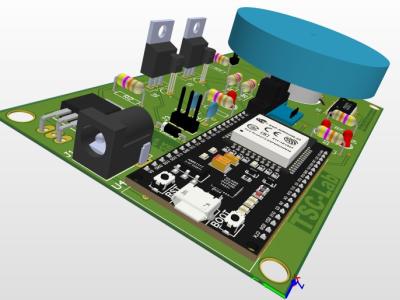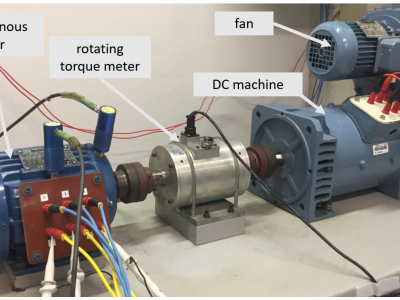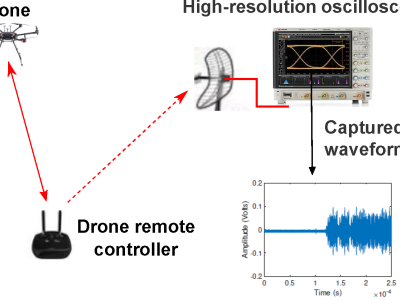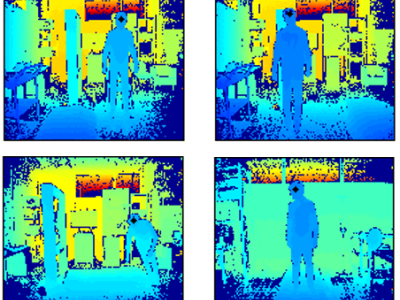PassengerEEG: An EEG Dataset for Passenger Hazard Perception in AVs
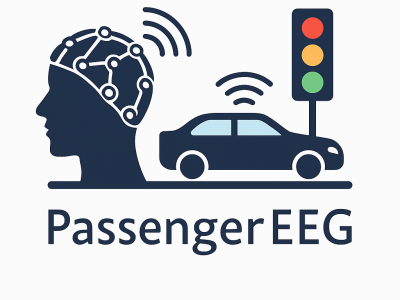
- Citation Author(s):
-
Hong Wang
- Submitted by:
- Ashton Tan
- Last updated:
- DOI:
- 10.21227/jw72-m261
Abstract
Abstract
PassengerEEG is a brain-signal dataset designed to study how human passengers perceive and cognitively respond to potential traffic hazards in highly automated vehicles (AVs). As AVs increasingly replace human drivers, understanding passenger cognition becomes essential for improving vehicle safety and adaptive decision-making.
The dataset was collected in a controlled driving simulation lab, where participants passively observed first-person traffic video clips rendered using the Virtual Test Drive (VTD) platform. The traffic scenarios include diverse real-world events such as pedestrian crossings, vehicle cut-ins, and emergency braking. Throughout the sessions, participants’ brain activity was recorded using EEG, capturing their implicit cognitive responses without requiring any manual action, except for spacebar presses at designated auditory cues to maintain attention.
The experiment consisted of four sessions per participant, conducted across multiple days. Each session included four video clips (~15 minutes each), with each clip containing 25 traffic events interleaved with safe intervals. In total, the dataset comprises approximately 4 hours of EEG recordings per participant and around 400 event-related EEG segments.
Each event-specific EEG segment is 8 seconds long: 2 seconds serve as baseline, followed by 6 seconds capturing the neural activity around the traffic event. Segments are labeled based on their temporal relevance for tasks such as Danger Identification (purple), Risk Prediction (blue), and Safe Monitoring (green), enabling multi-granularity decoding of passenger cognition.
PassengerEEG is the first dataset to focus on passengers rather than drivers, in the context of EEG-based traffic hazard perception, and supports research in passive brain-computer interfaces (BCIs), human-AV interaction, and neural decoding in real-world traffic scenarios.
Traffic Event Details
Pedestrian Events:
(ID 1) Crossing from Left — High risk
(ID 2) Crossing from Right — High risk
(ID 3) Standing on Left — Low risk
(ID 4) Standing on Right — Low risk
Vehicle Events (Non-Cut-in):
(ID 5) From Left — Low risk
(ID 6) From Right — Low risk
Vehicle Events (Cut-in):
(ID 7) From Left, Close distance — High risk
(ID 8) From Right, Close distance — High risk
(ID 9) From Left, Far distance — High risk
(ID 10) From Right, Far distance — High risk
Vehicle Events (Cut-out without Emergency Braking):
(ID 11) From Front, Close distance — Low risk
(ID 12) From Front, Far distance — Low risk
Vehicle Events (Cut-out with Emergency Braking):
(ID 13) From Front, Close distance — High risk
(ID 14) From Front, Far distance — High risk
Instructions:
<h2>Abstract</h2> <p><strong>PassengerEEG</strong> is a brain-signal dataset designed to study how human passengers perceive and cognitively respond to potential traffic hazards in highly automated vehicles (AVs). As AVs increasingly replace human drivers, understanding passenger cognition becomes essential for improving vehicle safety and adaptive decision-making.</p > <p>The dataset was collected in a controlled driving simulation lab, where participants passively observed first-person traffic video clips rendered using the Virtual Test Drive (VTD) platform. The traffic scenarios include diverse real-world events such as pedestrian crossings, vehicle cut-ins, and emergency braking. Throughout the sessions, participants’ brain activity was recorded using EEG, capturing their implicit cognitive responses without requiring any manual action, except for spacebar presses at designated auditory cues to maintain attention.</p > <p>The experiment consisted of four sessions per participant, conducted across multiple days. Each session included four video clips (~15 minutes each), with each clip containing 25 traffic events interleaved with safe intervals. In total, the dataset comprises approximately <strong>4 hours of EEG recordings per participant</strong> and around <strong>400 event-related EEG segments</strong>.</p > <p>Each event-specific EEG segment is 8 seconds long: 2 seconds serve as baseline, followed by 6 seconds capturing the neural activity around the traffic event. Segments are labeled based on their temporal relevance for tasks such as <em>Danger Identification</em> (purple), <em>Risk Prediction</em> (blue), and <em>Safe Monitoring</em> (green), enabling multi-granularity decoding of passenger cognition.</p > <p><strong>PassengerEEG</strong> is the first dataset to focus on <em>passengers</em> rather than drivers, in the context of EEG-based traffic hazard perception, and supports research in passive brain-computer interfaces (BCIs), human-AV interaction, and neural decoding in real-world traffic scenarios.</p >
<h3>Traffic Event Details</h3>
<table border="1" cellpadding="6" cellspacing="0" style="border-collapse: collapse; font-size: small;">
<thead style="background-color: #f2f2f2;">
<tr>
<th>ID</th>
<th>Type</th>
<th>Action</th>
<th>Dir.<sup>†</sup></th>
<th>Dist.</th>
<th>Risk</th>
</tr>
</thead>
<tbody>
<tr><td>1</td><td>Pedestrian</td><td>Cross</td><td>L</td><td>N/A</td><td>High</td></tr>
<tr><td>2</td><td>Pedestrian</td><td>Cross</td><td>R</td><td>N/A</td><td>High</td></tr>
<tr><td>3</td><td>Pedestrian</td><td>Stand</td><td>L</td><td>N/A</td><td>Low</td></tr>
<tr><td>4</td><td>Pedestrian</td><td>Stand</td><td>R</td><td>N/A</td><td>Low</td></tr>
<tr><td>5</td><td>Vehicle</td><td>Non-Cut-in</td><td>L</td><td>N/A</td><td>Low</td></tr>
<tr><td>6</td><td>Vehicle</td><td>Non-Cut-in</td><td>R</td><td>N/A</td><td>Low</td></tr>
<tr><td>7</td><td>Vehicle</td><td>Cut-in</td><td>L</td><td>Close</td><td>High</td></tr>
<tr><td>8</td><td>Vehicle</td><td>Cut-in</td><td>R</td><td>Close</td><td>High</td></tr>
<tr><td>9</td><td>Vehicle</td><td>Cut-in</td><td>L</td><td>Far</td><td>High</td></tr>
<tr><td>10</td><td>Vehicle</td><td>Cut-in</td><td>R</td><td>Far</td><td>High</td></tr>
<tr><td>11</td><td>Vehicle</td><td>Cut-out w/o EB<sup>‡</sup></td><td>F</td><td>Close</td><td>Low</td></tr>
<tr><td>12</td><td>Vehicle</td><td>Cut-out w/o EB</td><td>F</td><td>Far</td><td>Low</td></tr>
<tr><td>13</td><td>Vehicle</td><td>Cut-out w/ EB</td><td>F</td><td>Close</td><td>High</td></tr>
<tr><td>14</td><td>Vehicle</td><td>Cut-out w/ EB</td><td>F</td><td>Far</td><td>High</td></tr>
</tbody>
</table>
<p style="font-size: small;">
<sup>†</sup> Dir.: L = Left, R = Right, F = Front. <br>
<sup>‡</sup> EB stands for Emergency Braking.
</p >
 88 views
88 views


